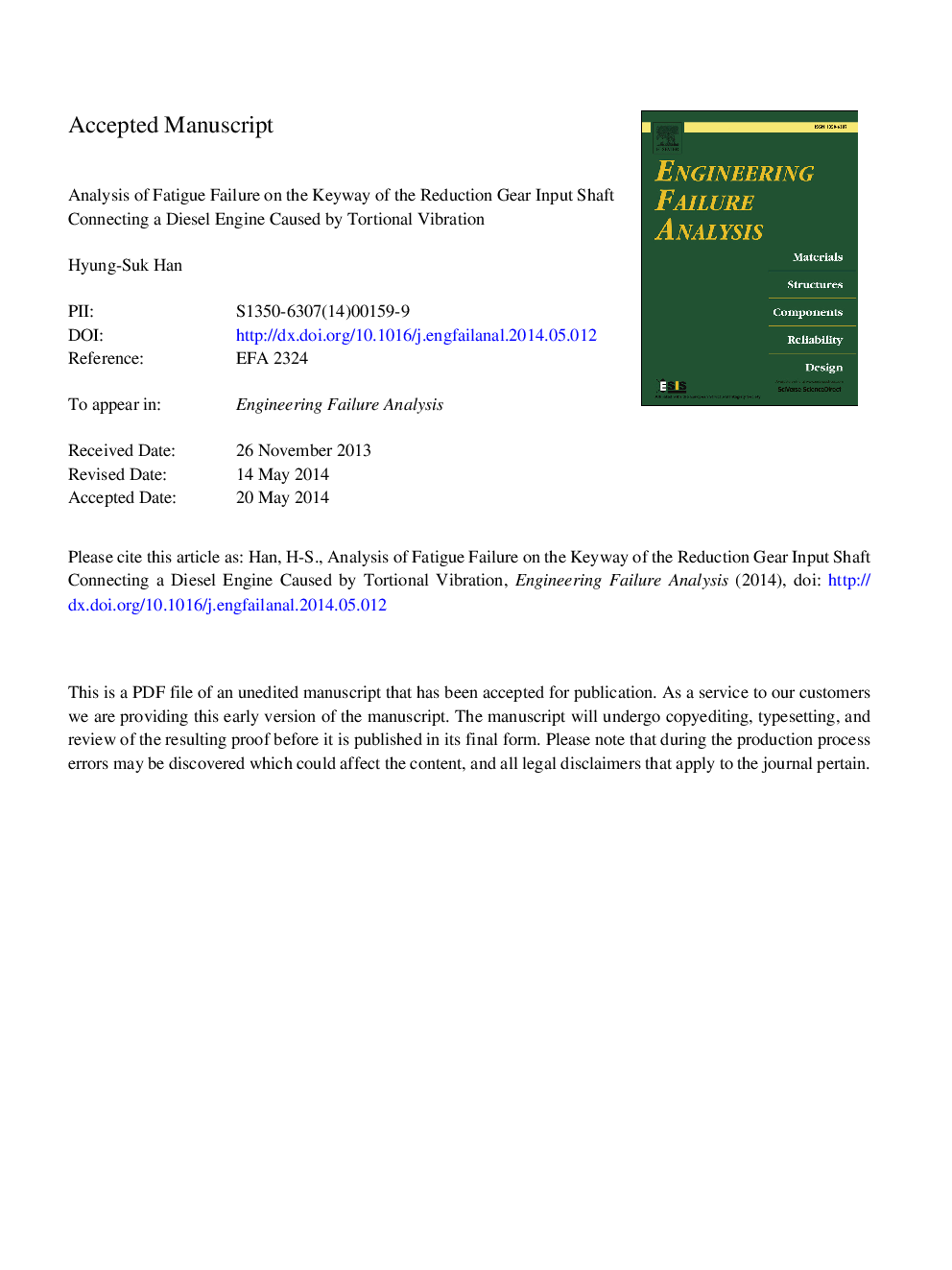| Article ID | Journal | Published Year | Pages | File Type |
|---|---|---|---|---|
| 7168411 | Engineering Failure Analysis | 2014 | 29 Pages |
Abstract
The vibratory torque of a diesel engine caused by the reciprocating motion of the mass and gas pressure force of a cylinder is one of the main causes of the failure of the driving shaft of the diesel engine and the connecting shaft to the reduction gear. Because high cycle torsional fatigue can occur in the reduction gear shaft connecting the engine under vibratory torsional stress, the US Navy restricts it under the MIL G 17859D(SH) standard and suggests a procedure for evaluating the safety of the shaft for the reduction gear. In this study, the structural safety of the reduction gear input shaft in which fatigue failure occurs in typical naval vessels is investigated in accordance with the VDI 3822 RCA (root cause analysis) procedure based on the MIL G 17859D(SH) standard. When evaluating the safety factor in accordance with the MIL G 17859D(SH) standard, the alternating bending moment from the lateral vibration and the stress concentration factor under static load are considered. In addition, an improved design is suggested by CAE to satisfy the safety factor suggested by the MIL G 17859D(SH) standard.
Related Topics
Physical Sciences and Engineering
Engineering
Industrial and Manufacturing Engineering
Authors
Hyung-Suk Han,
